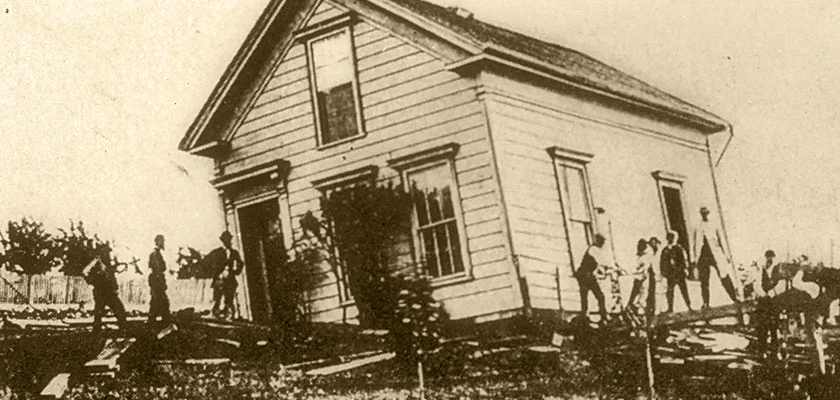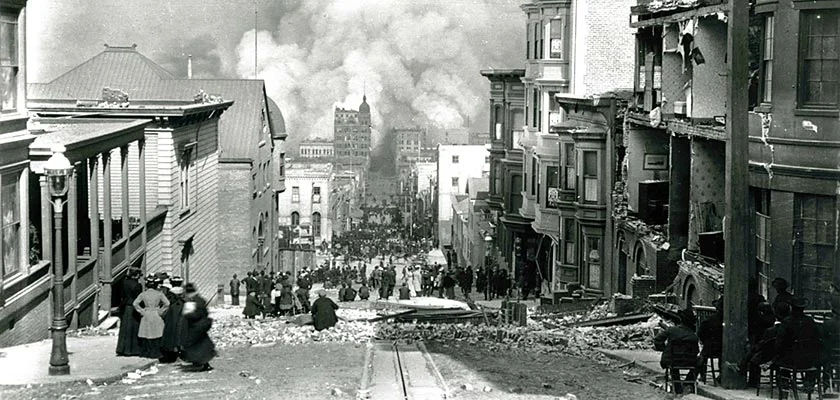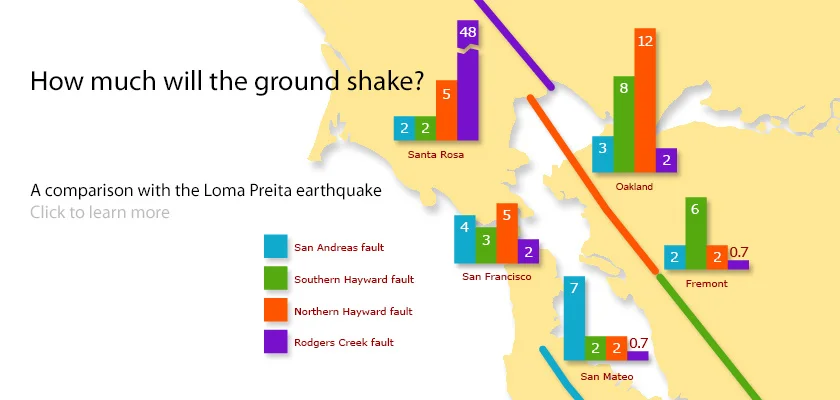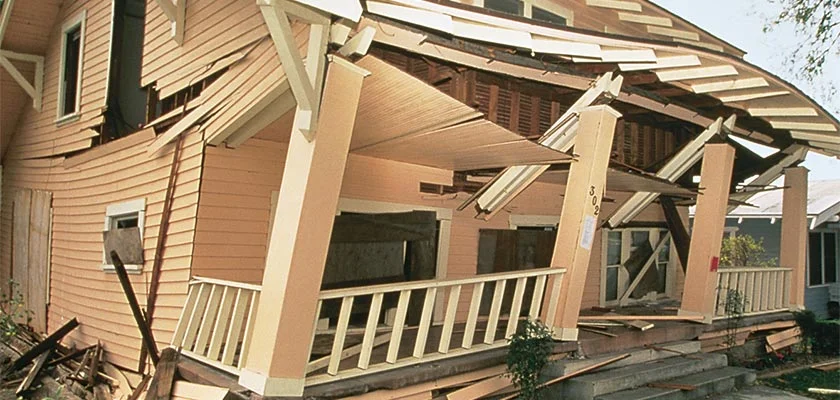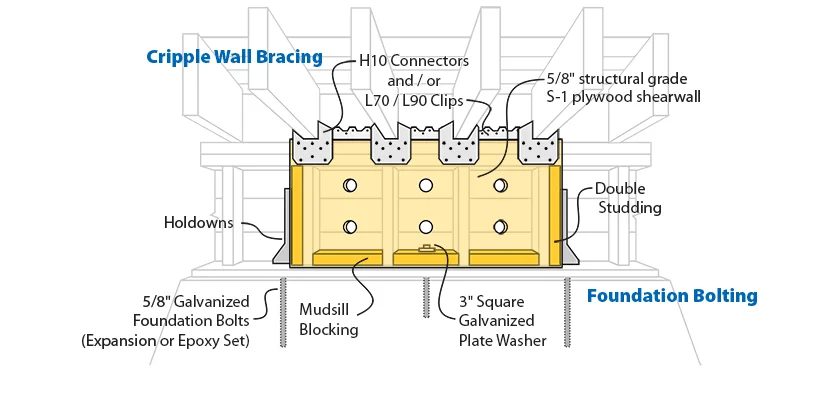
Actual Information about Earthquakes in Bay Area Map
Seismic Upgrades for Wood Frame Houses
Many people living in the Bay Area have a fatalistic view regarding earthquakes. If it happens there’s nothing I can do, so why worry about it? While it is certainly true that another great quake is inevitable in the Bay Area, identifying and correcting certain well-known structural deficiencies can avoid a tremendous amount of damage to existing wood frame houses.
Experience from the October 17, 1989 Loma Prieta earthquake has confirmed what previous engineering studies have stressed: Almost all serious damage to wood frame houses has been a result of either 1) insufficient connections between frame and foundation and/or 2) insufficient lateral bracing (shear-strength) in the load bearing, supporting walls.
Without adequate frame-to-foundation connections, a house can be displaced completely from its foundation in a strong quake. Insufficient lateral bracing typically results in either a partial or complete collapse of the perimeter cripple walls, which form the basement and crawl space areas. Either form of damage can amount to a total loss scenario for the homeowner.
The good news is that properly reinforced houses in the hardest-hit areas of Santa Cruz and Watsonville performed very well during the Loma Prieta quake, suffering little or no damage. The overall pattern of residential performance not only mirrored the experience of previous California earthquakes, but also corroborated what various engineering reports have predicted for years.
There is no question that the Bay Area is due for another quake far worse than the Loma Prieta earthquake. The impact on homeowners could range from minimal to disastrous depending on whether appropriate reinforcing measures are taken.
Earthquake Hazards
Earthquake hazards include any physical phenomenon associated with an earthquake that may produce adverse effects on human activities. While they are often used as synonyms, it is useful to distinguish between "hazards" and "risk". Hazards are the natural phenomena that might impact a region, regardless of whether there is anyone around to experience them or not. Risk refers to what we stand to lose when the hazard occurs; it is what we have built that's threatened. Risk can usually be measured in dollars or fatalities. Hazard is generally measured in more physical units: energy, shaking strength, depth of water inundation, etc.
Read more about Earthquake Hazards
Earthquake Retrofitting
What is an Earthquake Retrofit? In this category you can find information about How to Protect Your Home from Quakes
Read more about Earthquake Retrofitting
Bay Area earthquake hazards
In this section USGS Earthquake Hazards Program, responsible for monitoring, reporting, and researching earthquakes and earthquake hazards is provided.
Read more about Bay Area earthquake hazards
